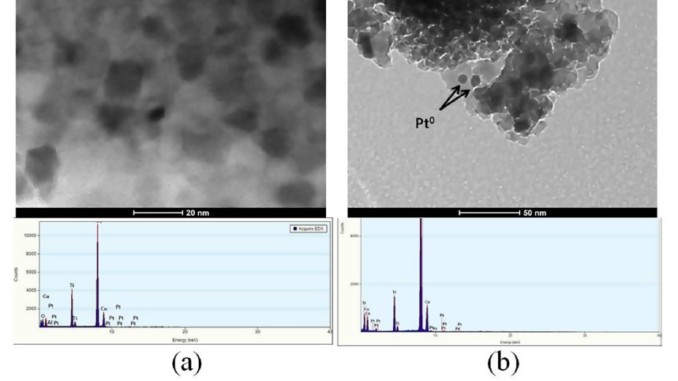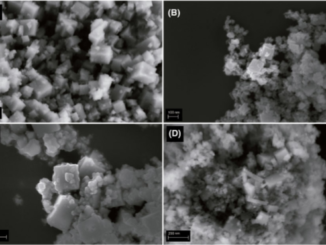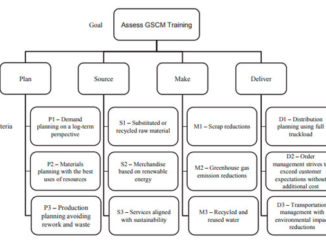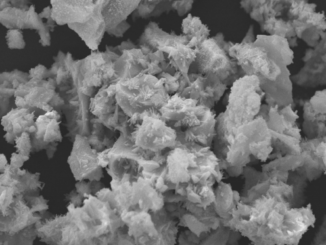
Writers: Adriane V. Rosario, Ernesto C. Pereira
Keywords: TiO2; Photocatalysis; Polymeric precursor method; Pechini method; Pt doping
Abstract: Platinum-loaded titanium oxide nanoparticles, Pt-TiO2, were prepared using the polymeric precursor method with titanium isopropoxide as metal precursor. Platinum ions were added to the titanium precursor solution with Pt/Ti molar ratios between 0.005 and 10 mol%. The characterization of the physical properties was carried out by BET-surface area, transmission electron microscopy (TEM) and X-ray diffraction (XRD) with Rietveld quantitative analysis. The XRD patterns indicated that Pt doping occurred only for samples containing less than 1.0 mol% of platinum, and a small amount of rutile phase was observed after doping. For 1.0 mol% or higher Pt concentration a metallic Pt phase was detected. On the other hand, TEM analysis showed that the doping/metallization limit is still lower. Samples with nominal Pt concentration of 0.1 mol% presented signal of Pt metal particles. The photocatalytic activities of the samples were studied using methyl orange (MO) as model compound under UV illumination. In all Pt-TiO2 samples the photocatalytic activity was found to increase in comparison with pure TiO2 samples, either by the doping mechanism (at a low Pt concentration level), or by charge transfer mechanism in the interface metal/oxide (at a high Pt concentration level). The increase in Pt content, up to 0.2 mol% of Pt, was found to enhance the photocatalytic activity of TiO2towards the decomposition of MO. At even higher concentrations, platinum no longer acted as a dopant: instead, metallic Pt particles decorated the oxide surface. Doped and metallized samples had similar photocatalytic activity.




